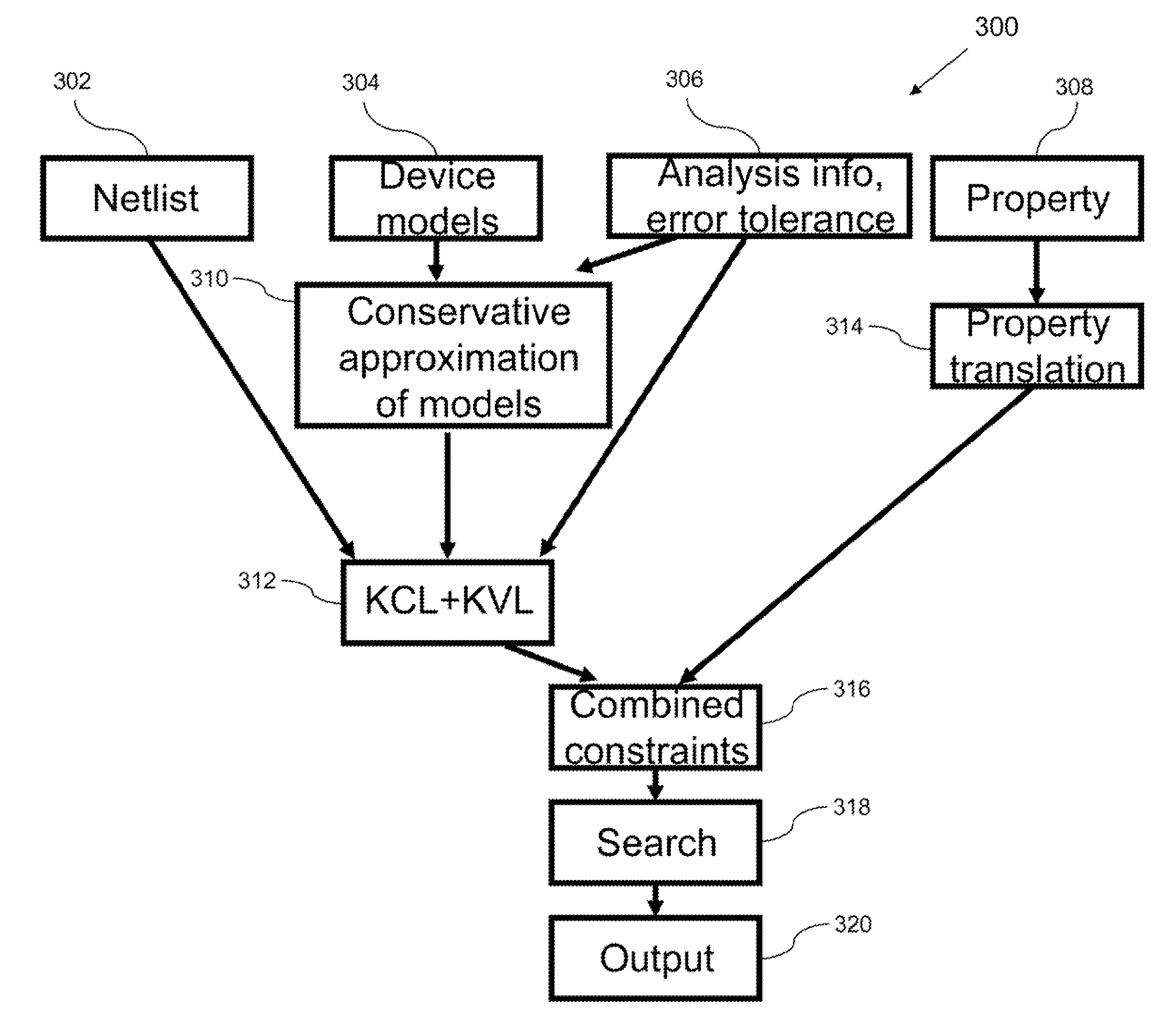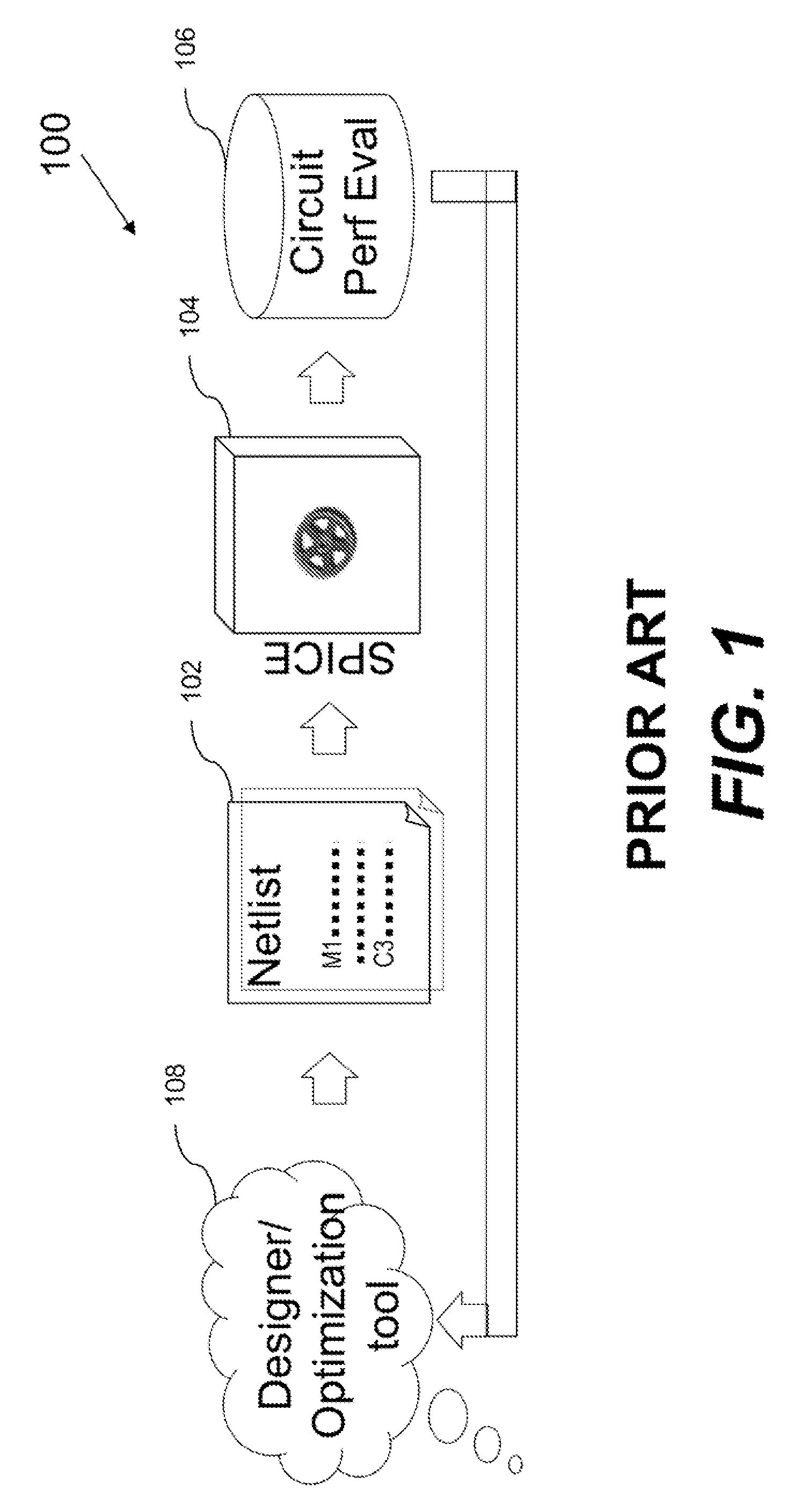Boolean satisfiability based verification of analog circuits
a verification process and logic technology, applied in the field of formal verification of systems, can solve the problems of increasing design challenges, and wasting time and money on verification processes of the general type described above, and achieving the effect of reducing design complexity and time-consuming and labor-intensive problems
- Summary
- Abstract
- Description
- Claims
- Application Information
AI Technical Summary
Benefits of technology
Problems solved by technology
Method used
Image
Examples
example
[0058]FIG. 4 is an illustrative drawing of a circuit that includes a resistor and a diode-connected transistor (hereinafter diode), which may be a portion of a larger circuit (not shown). The circuit includes a shared connection 501 / 503 between a terminal 501 of the transistor and a terminal 503 of the resistor associated with voltage V and current I as shown. A Vdd bias voltage is coupled to a terminal 504 of the resistor, and an effective ground voltage is coupled to a terminal 506 of the diode.
[0059]FIG. 5 is an illustrative drawing of showing separately the diode and the resistor of FIG. 4 and showing their associated currents and voltages. The diode has terminals 501 and 506. Diode voltage Vg is across diode terminals 501 and 506. A diode current Id flows through the diode from terminal 501 to terminal 506. The resistor has terminals 504 and 503. A voltage Vdd is associated with resistor terminal 504, and a voltage Vr is associated with resistor terminal 5...
PUM
 Login to View More
Login to View More Abstract
Description
Claims
Application Information
 Login to View More
Login to View More - R&D
- Intellectual Property
- Life Sciences
- Materials
- Tech Scout
- Unparalleled Data Quality
- Higher Quality Content
- 60% Fewer Hallucinations
Browse by: Latest US Patents, China's latest patents, Technical Efficacy Thesaurus, Application Domain, Technology Topic, Popular Technical Reports.
© 2025 PatSnap. All rights reserved.Legal|Privacy policy|Modern Slavery Act Transparency Statement|Sitemap|About US| Contact US: help@patsnap.com



